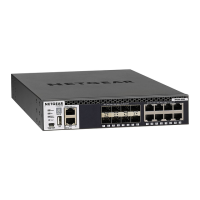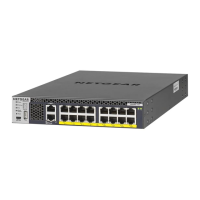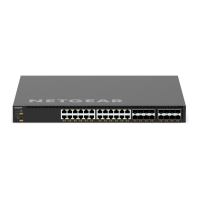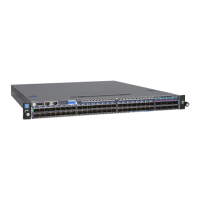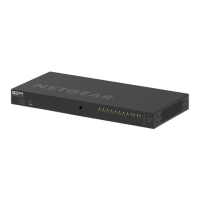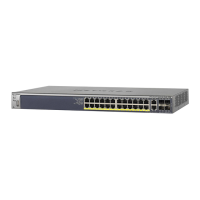Configuration Examples
689
M4300 Series and M4300-96X Fully Managed Switches User Manual
The DiffServ feature contains a number of conceptual QoS building blocks you can use to
construct a differentiated service network. Use these same blocks in different ways to build
other types of QoS architectures.
There are 3 key QoS building blocks needed to configure DiffServ:
• Class
• Policy
• Service (the assignment of a policy to a directional interface)
Class
You can classify incoming packets at Layers 2, 3 and 4 by inspecting the following
information for a packet:
• Source/destination MAC address
• EtherType
• Class of Service (802.1p priority) value (first/only VLAN tag)
• VLAN ID range (first/only VLAN tag)
• Secondary 802.1p priority value (second/inner VLAN tag)
• Secondary VLAN ID range (second/inner VLAN tag)
• IP Service
T
ype octet (also known as: ToS bits, Precedence value, DSCP value)
• Layer 4 protocol (TCP, UDP and so on)
• Layer 4 source/destination ports
• Source/destination IP address
From a Dif
fServ point of view, there are two types of classes:
• Dif
fServ traffic classes
• DiffServ service levels/forwarding classes
DiffServ Traffic Classes
With DiffServ, you define which traffic classes to track on an ingress interface. You can define
simple BA classifiers (DSCP) and a wide variety of multi-field (MF) classifiers:
• Layer 2; Layers 3, 4 (IP only)
• Protocol-based
• Address-based
You can combine these classifiers with logical AND or OR operations to build complex
MF-classifiers (by specifying a class type of all or any, respectively).
That is, within a single
class, multiple match criteria are grouped together as an
AND expression or a sequential OR
expression, depending on the defined class type. Only classes of the same type can be
nested; class nesting does not allow for the negation (exclude option) of the referenced
class.
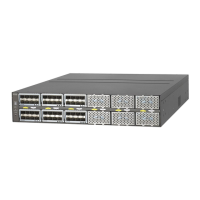
